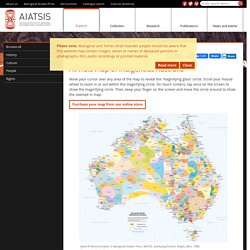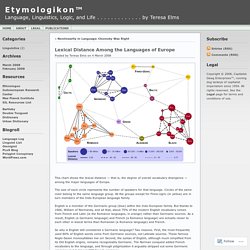

Jokes and puns you will only laugh at if you have knowledge about different languages. – The Language Nerds. Your ability to speak different languages, or at least know a little bit about them, comes in handy sometimes.

Besides the cognitive advantages that come with speaking different languages, this ability also gives you unique insights into other cultures, it allows you to communicate with a wide array of beautifully different people, and you could also use it to overhear conversations about you in a different language. Most importantly, when you know other languages your humor repertoire expands. You develop the necessary knowledge to understand jokes, memes, and puns from different cultures. The World’s Writing Systems. Check out this map of all the languages currently spoken in the world. I COME FROM a part of France that likes to think of itself as separate from the rest of the country: Brittany.
So much so that if I had been born 50 years earlier I would probably have been speaking Breton rather than French with my immediate relatives. But with time and “unifying” language policies, Breton has faded in the background and French has taken over. Each pin on Ethnologue‘s map represents one of the 7,099 languages spoken today in the world and, although the majority of them (two-thirds) are from Asia and Africa, I am able to locate Breton among the multitude of yellow pins and find its profile. Because of an incredible revival, Breton’s status says “shifting”, but 25 years ago, it probably said, “endangered“, like a third of all languages today. To see specific language names and obtain details, you just need to hover over the pins and click to check out the language’s profile.
What language do YOU speak? Australian Institute of Aboriginal and Torres Strait Islander Studies. Move your cursor over any area of the map to reveal the 'magnifying glass' circle.

Scroll your mouse wheel to zoom in or out within the magnifying circle. On touch screens, tap once on the screen to show the magnifying circle. Then, keep your finger on the screen and move the circle around to show the zoomed in map. Purchase your map from our online store For thousands of years, the original inhabitants of Australia, Aboriginal and Torres Strait Islander peoples occupied the lands with very different boundaries than today, centred on intimate cultural relationships with the land and sea. American English Dialects. North American English Dialects, Based on Pronunciation Patterns Small-Scale Dialect Map The small map below is the same as the Full-Scale Dialect Map that follows, but shows the entire width of the map (on most monitors). 24-Aug.-2010 Click on any part of this map to move to the equivalent part of the Full-Scale Dialect Map.

(For now this only moves to the far left or the far right of the Full-Scale Dialect Map, so unfortunately it doesn’t work well for the middle portions, and you will just have to scroll over.) 24-Aug.-2010 Full-Scale Dialect Map Instructions. Lexical Distance Among the Languages of Europe « Etymologikon™ Posted by Teresa Elms on 4 March 2008.

Language Zen: The Fastest Way to Learn Spanish. Home. The Recordings: BAPLAR (Babylonian and Assyrian Poetry and Literature: An Archive of Recordings) SOAS University of London. Special characters (tsade and tet) are in Steve Tinney's Ungkam font, derived from sil.org's Gentium font.

To display them correctly, download the font from oracc.museum.upenn.edu/doc/user/fonts. The download is free. There are both a Mac Suitcase version and a Win/Linux OpenType version. Map of how the world's first major written languages spread. Languages.png (PNG Image, 2000 × 3261 pixels) - Scaled (30%) A Proportional Perspective of the World's Native Languages. Linguistic Family Tree. 552K 18.4KShare337 When linguists talk about the historical relationship between languages, they use a tree metaphor. An ancient source (say, Indo-European) has various branches (e.g., Romance, Germanic), which themselves have branches (West Germanic, North Germanic), which feed into specific languages (Swedish, Danish, Norwegian). Lessons on language families are often illustrated with a simple tree diagram that has all the information but lacks imagination.
Global Language Network. 23 maps and charts on language. Why is English so weirdly different from other langu... English speakers know that their language is odd. So do people saddled with learning it non-natively. The oddity that we all perceive most readily is its spelling, which is indeed a nightmare. In countries where English isn’t spoken, there is no such thing as a ‘spelling bee’ competition. For a normal language, spelling at least pretends a basic correspondence to the way people pronounce the words. But English is not normal. Spelling is a matter of writing, of course, whereas language is fundamentally about speaking. There is no other language, for example, that is close enough to English that we can get about half of what people are saying without training and the rest with only modest effort. We think it’s a nuisance that so many European languages assign gender to nouns for no reason, with French having female moons and male boats and such.